Of all the sinister-looking bugs and other creepy-crawlies out there, surprisingly few of them actually hurt you, even though they may bite, sting, poke, or pinch. Ugly and potentially annoying, maybe, but many of these insects also do good works, eating up even nastier cousins and helping plants. Certainly, black widow and brown recluse spiders can be life-threatening, but they don’t strike too often. Here’s what you need to know to navigate a world which, after all, belonged to bugs before humans.
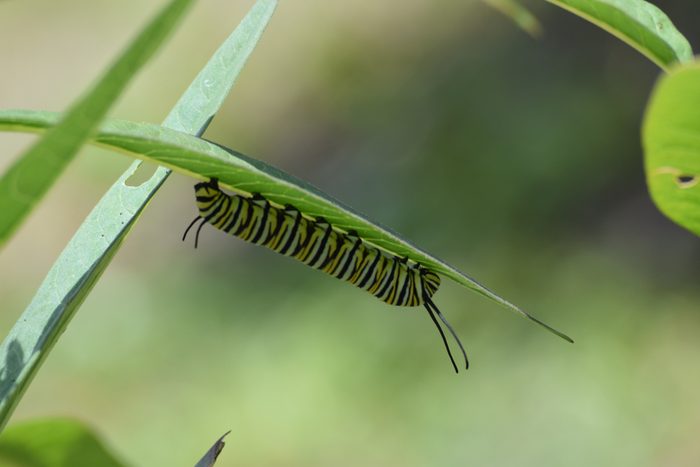
Caterpillars
That cute little crawler may not be as cuddly as you think, at least not all of them. “Some have spines or hairs on their body that are actually attached to venom glands so if you touch them or one falls from a tree, it can cause a stinging sensation. Some people get a rash,” says Wizzie Brown, an entomologist and extension program specialist at Texas AgriLife Extension Service in Austin, Texas. One caterpillar to definitely avoid is the asp, which can cause serious burning and a rash that lasts about an hour. “Unless you know your caterpillars really well, it wouldn’t be a good idea to touch them,” says Brown. To treat caterpillar exposure, place a piece of tape over the exposed area (any kind of tape will do), then pull it up to remove the hairs or spines. Repeat with fresh tape as often as needed, then wash the area with soap and water.
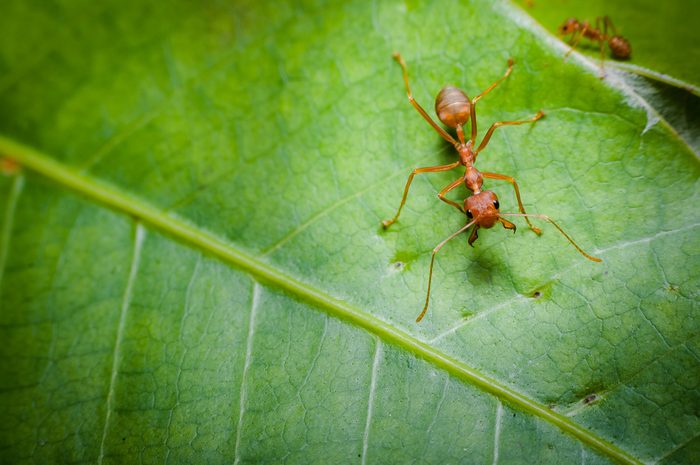
Ants
Anybody who’s kicked a fire ant mound knows the consequences. “They will readily defend their nest and attack you,” says medical entomologist Joseph M. Conlon, spokesperson for the American Mosquito Control Association. “They’ll come out en masse, thousands of them within a three- or four-foot radius of the mound, and they’ll attack you and your pets.” This diabetic woman nearly lost her leg due to an ant bite.
Fire ants—which latch onto you with a bite and then give multiple painful stings—aren’t the only potentially painful member of the ant family. It’s rare for any of the thousands of other species of ants to cause serious reactions, unless there are multiple stings or an allergic reaction, according to the National Capital Poison Center. Though not as aggressive as fire ants (which can sting you seven or eight times in rapid succession), in the United States there are also harvester ants and oak ants also can sting. Because it’s always possible to get more than one sting from any kind of ant, brush them off if they land on you. If you do get bitten, here’s what happens with a bug bite—and why you shouldn’t scratch it.
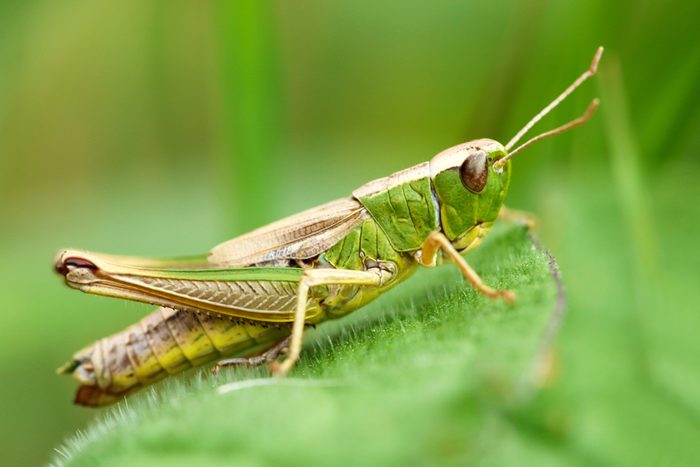
Grasshoppers
These cute little green bugs are super tempting to hold—but they don’t actually like to be cuddled and could bite you. “A grasshopper may bite if it is being held too tightly or feels threatened,” says Sydney Crawley, a public health entomologist and consultant for Scotts Miracle-Gro. Additionally, spines on the legs of a grasshopper can irritate you. “If you’re holding them it sort of feels like Velcro and attaches to you,” says Brown. “It may feel like you’re being bitten but you’re actually not.”
Grasshoppers also can regurgitate a liquid on you. It’s not intended to hurt, just aimed to make you leave them alone. Admire grasshoppers from a distance—or hold them very gently with open palms if you really want to pick one up. If you do get bitten, your skin might be mildly irritated—but a little antiseptic will help.
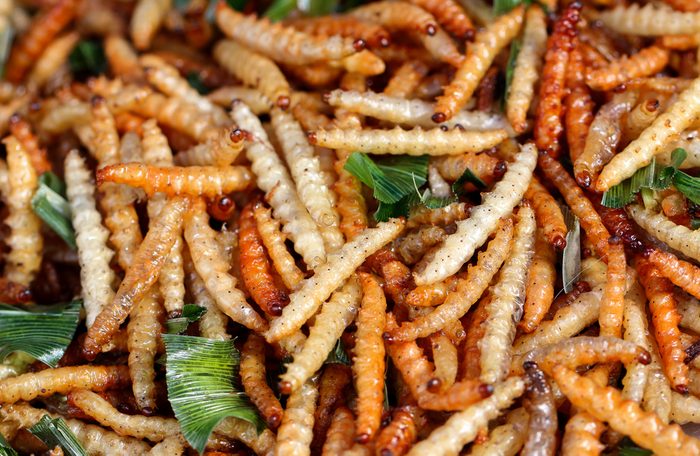
Mealworms
In some parts of the world, people eat mealworms for protein, says Brown. But these larvae of the mealworm beetle are more commonly fed to pet reptiles. Like grasshoppers, mealworms have mandibles—jaw-like mouthparts used to bite, cut, and hold food. “They’re capable of biting you but they’re not being vicious or trying to eat you,” says Brown. “They want you to put them down.” Some people cultivate mealworms to feed birds but, even then, you may want to think twice before touching them with your hands.
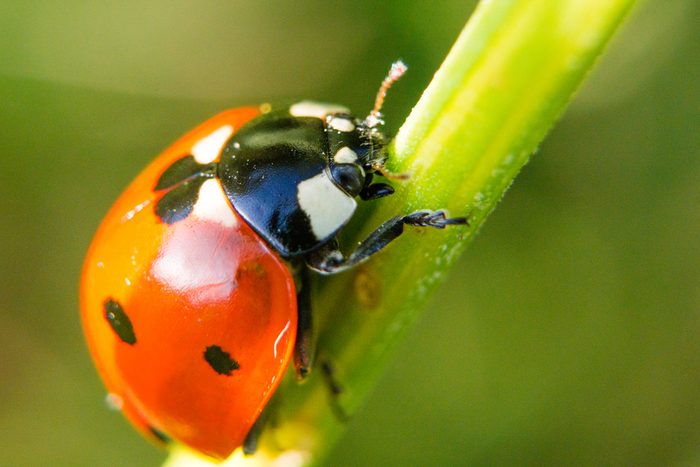
Ladybugs
Those adorable little red bugs (they’re actually a type of beetle) could give you a tiny and pretty painless nip. The imported Asian ladybird is more likely to bite than domestic varieties. “Ladybugs may bite, but their jaws are very small and it would feel like a tiny pinch at worst, and it would be almost impossible to break human skin,” says Joseph Spagna, PhD, an associate professor of biology at William Paterson University in Wayne, New Jersey. “Ladybugs are ecologically helpful—they spend their days eating plant-damaging insects like aphids in large numbers. Being gentle with them when they land on you is about all you would need to do to stay on 100 percent-friendly terms.”
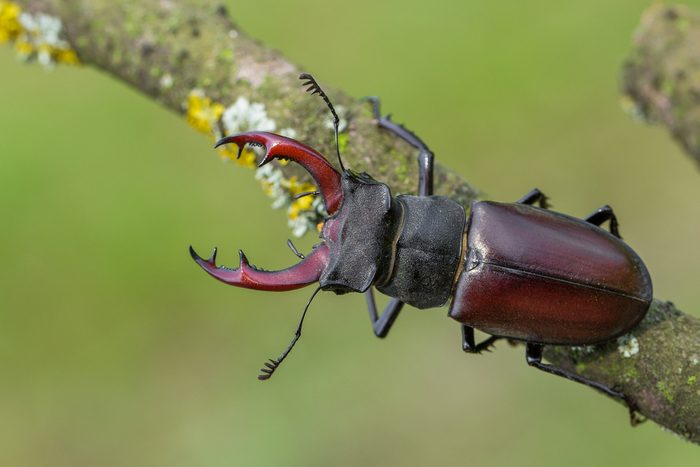
Beetles
Beetles are actually beneficial because they eat other insects. “Usually the ones that would bite are some of the larger species of ground beetles,” says Brown, who is a member of the Entomological Society of America. Stag beetles, for instance, have “really huge mandibles that are very distinct. It’s just kind of a pinch.” When blister beetles bite, they release a toxic fluid called cantharidin which can cause blisters upon contact. The damage should be mild and you should recover in a few days. No matter what insect got you, here are the best ways to treat bug bites.
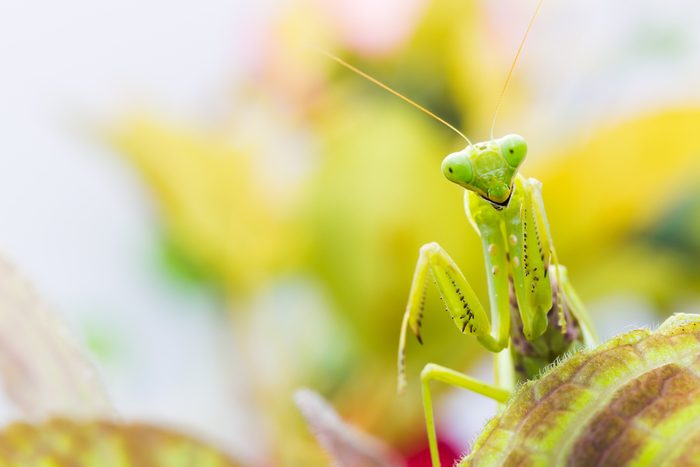
Praying mantis
Praying mantises (so named because they hold their front legs in a prayer pose), are also “preying,” notes Brown. They’re famous for biting off the heads of their mates—but their jaws could put a pinch on you, too. While they may bite the head off of love interests, they don’t usually bite humans. “They have specialized front legs (raptorial front legs) they use to grab hold of prey,” Brown says. “They have spines on those legs.” If you must hold one, move slowly and keep an open palm, and preferably allow them to walk toward you, says Crawley. If bitten, gentle cleansing and treatment with an antiseptic should be sufficient.
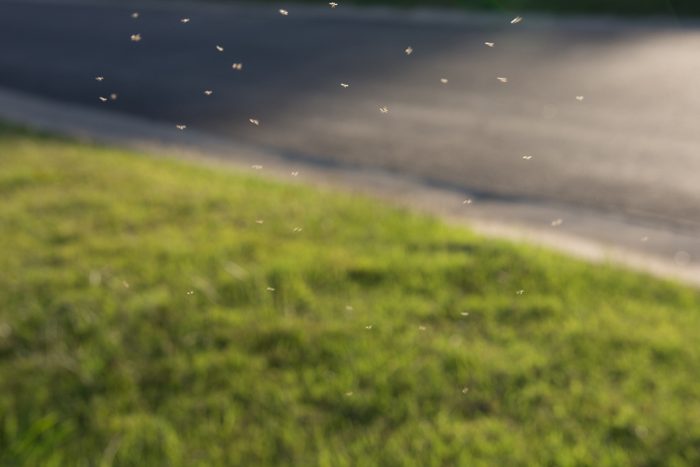
Gnats
Most gnats are just a big nuisance. But a tiny, gnat-like fly called a biting midge (you might know it as the “no-see-um”) can make tiny bites that can burn and leave big red welts, says Conlon. They also might cause itching. Fortunately, even though they do suck blood, they’re not known to spread disease to humans, he says. If you’re in an area where they’re common, you’ll need a fine mesh screen on your windows and doors to help keep them out.
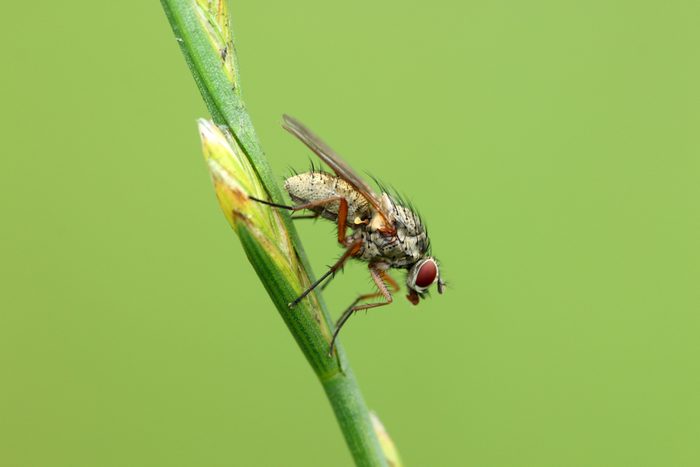
Flies
The standard housefly rarely bites, but he has a lot of nippy cousins. “There are many different types of biting flies: deer flies, horse flies, stable flies, and black flies,” says Crawley. “Regardless of species, they all have one thing in common—they’re out for blood. What’s more, coming inside isn’t even a guarantee that you’re safe from biting flies, since they can get inside your home.” Horse flies and deer flies, in particular, have a nasty bite and like to go for the back of your head, says Brown. “They have these scissors-like mouthparts and they’ll cut your skin, the blood pools, and they lap it up,” she adds. “It really, really hurts. They’re very aggressive.”
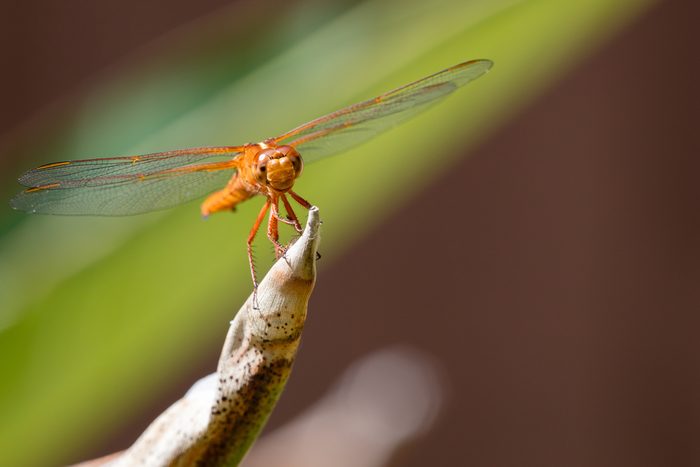
Dragonflies
Dragonflies rarely hurt you, by simple virtue of the fact that they’re so fast—they’ll dart right out of your reach. Dragonfly larvae, on the other hand, are predators. “They have mouth parts that look like a spoon with teeth and they shoot it out from under their head, grab what they’re eating and pull it back to them,” she adds. “They can bite you if you’re trying to catch them.” You’ll want to keep mature dragonflies around because they eat mosquitoes, midges, moths, and other flying insects.
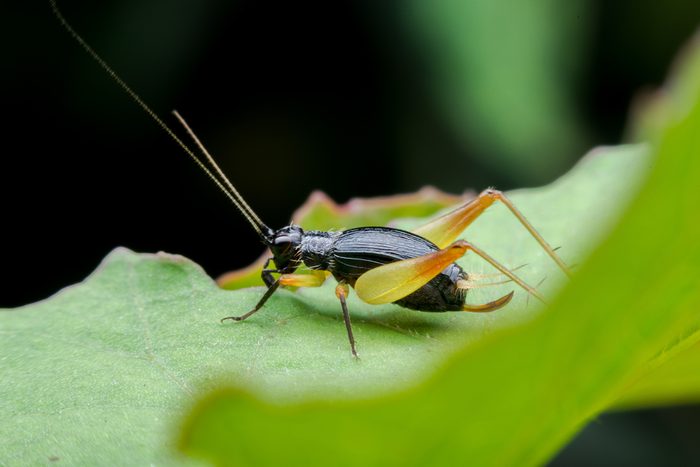
Crickets
Some species of crickets, such as the Jerusalem cricket, are capable of biting humans if provoked. Still, it’s rare for these critters to bite. “The cricket species kids run into in North America are basically harmless,” Spagna says. “I handle the common ‘house cricket’ Acheta domesticus in my behavior classes regularly, with bare hands, and they have never bitten me.” Like grasshoppers, though, they have big spines on their legs and they do have mandibles that could bite, says Brown.
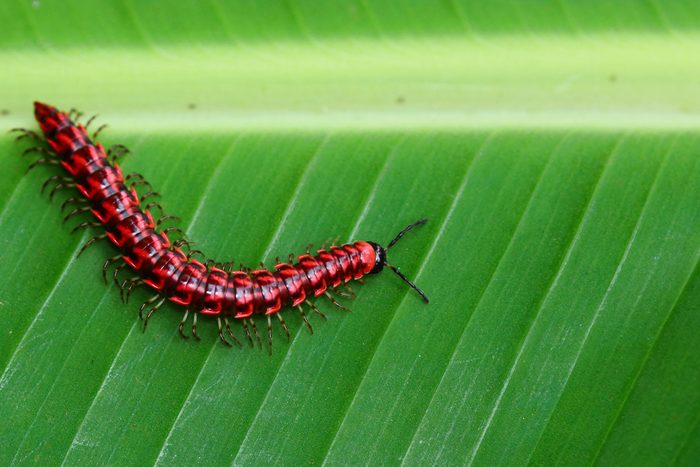
Millipedes
Though not technically an insect, some millipedes can be harmful, but not because they bite. “Some of them can exude a kind of caustic substance out of their body,” says Brown. “It’s not biting. It’s more of a chemical that they’re releasing and it can cause a burning sensation or rash.” The toxins are meant to keep away natural predators and can sometimes be projected as far as 32 inches. If you fall victim to millipede toxin, wash with soap and water (not alcohol). If the chemical gets in your eyes, flush with water.
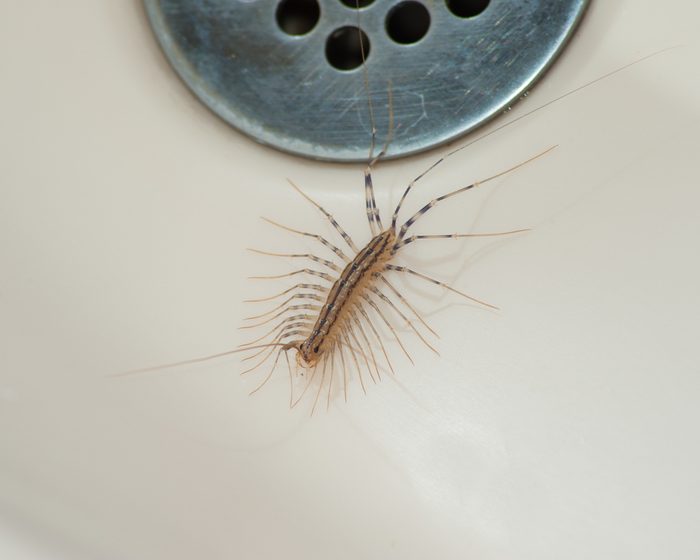
Centipedes
Centipedes don’t bite, exactly. They pinch and deliver venom through hollow front legs. This can be painful, “far worse than a bee sting, and they don’t bite once—they continue to do it, introducing venom into the wound,” says Conlon. Though painful, most stings are small and rarely do centipedes sting humans. Centipedes are considered beneficial because they help control household pests such as cockroaches, silverfish, and ants. Including centipedes, check out the 12 most dangerous bugs to watch out for this summer and how to protect yourself.
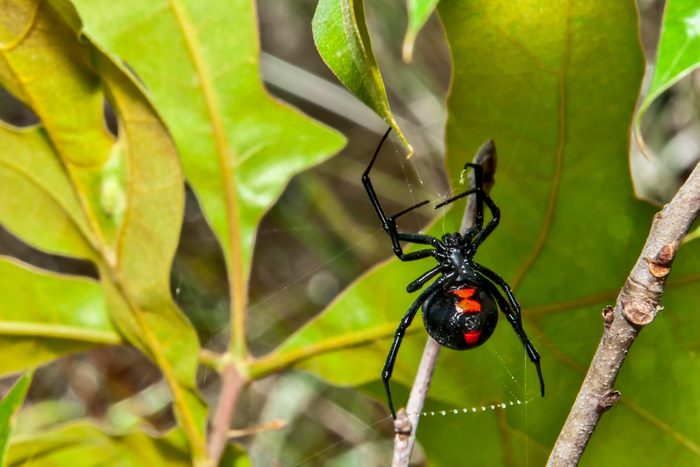
Spiders
Spiders get a bad rap, considering the important role they play in helping keep the bug population in check. Spider bites are rare—they won’t bite unless they feel threatened and, in the United States, other than the brown recluse and the black widow, spiders bites are harmless. “My students have shared with me many myths about ‘the most dangerous insect’ or the ‘most venomous spider,'” says Spagna. “These are not just mostly wrong—they tend to be wildly wrong! People generally overestimate the danger of things that give them a creepy feeling.”
